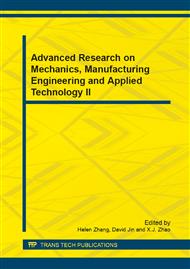p.492
p.496
p.503
p.507
p.512
p.518
p.521
p.525
p.528
Study of Evaluation Method about the Presswork Quality of Digital Inkjet System
Abstract:
At present, the productivity benefits of inkjet printing technology with high speed shows a rapid expanding trends, however, the precondition of which is its high quality presswork. Therefore, one of the top priorities now is to find better way to evaluate the presswork quality scientifically and effectively. A new parameter, ink dot fidelity, was introduced as an evaluation criterion to study the presswork quality in this paper. The four evident effect factors that fluctuated more during the printing process were chosen, such as the paper transmission speed, the print head (nozzle) voltage, the ink cartridge pressure and the distance between the print head and paper, to make the scientific orthogonal experiment design. The fluctuation rules of the ink dot fidelity corresponding to each effecting factors were obtained through intuitively analyzing of the orthogonal tables and the effect curves. Based on the experiment, the test data were fitted and optimized by using the mathematical analysis software of MATLAB and the least-square method. And then the mathematical model for ink dot fidelity and these affecting factors were created. Finally, the user interface (GUI) design platform was developed to improve the man-machine communication and the ink dot fidelity, or the presswork quality.
Info:
Periodical:
Pages:
512-517
Citation:
Online since:
April 2014
Authors:
Price:
Сopyright:
© 2014 Trans Tech Publications Ltd. All Rights Reserved
Share:
Citation:


